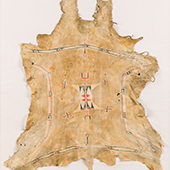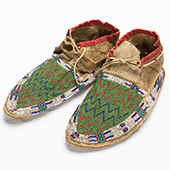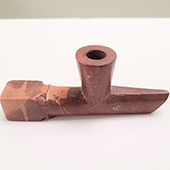Horse Tack
Plains Indians began acquiring horses directly from Spanish settlements in the Southwest in the early 1600s, and their use gradually spread northward until the far northern nations were supplied by the late 1700s. The introduction of horses to the Plains nations created a massive cultural shift that changed everything from travel, hunting, and warfare, to wealth and prestige. Horses made Historic Period Plains culture as we know it possible. Horses proved to be the ideal mode of transportation over the vast grasslands and were a great improvement over dogs as pack animals. Plains Indians became experts in horse riding and training. In addition to their overall cultural significance, horses also became a standard of value and medium of exchange. Some nations kept herds of several hundred animals.
Plains Indians made bridles out of twisted or braided horse hair, buffalo hair, rawhide, or tanned leather. They did not use bits, but rather looped the rope over the lower jaw or nose creating one or two reins. The riders used short stirrups and steered their animals primarily with knee pressure, allowing their hands to be free for hunting or combat. Horse reins were sometimes spliced to reach lengths of 25 feet or longer so if a rider was thrown he could grab the uncoiling rope to stop his mount.
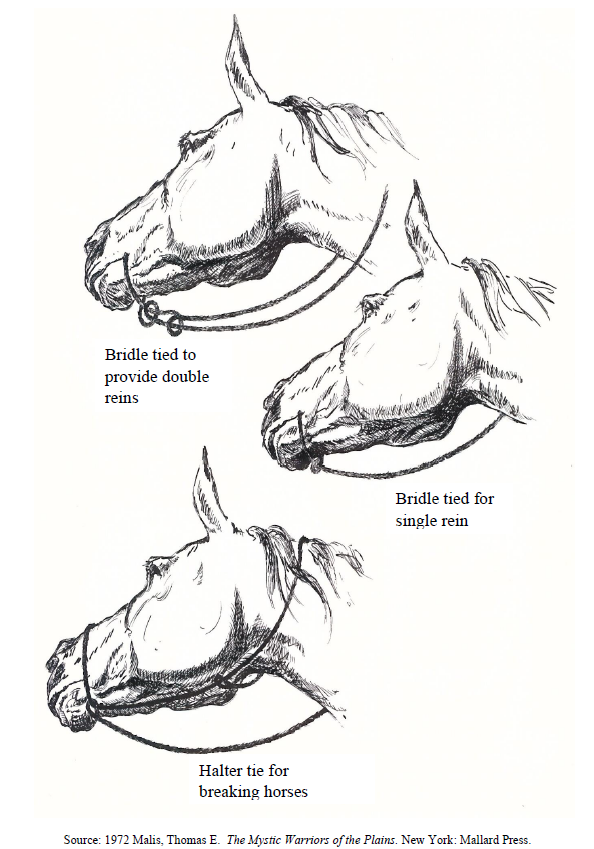
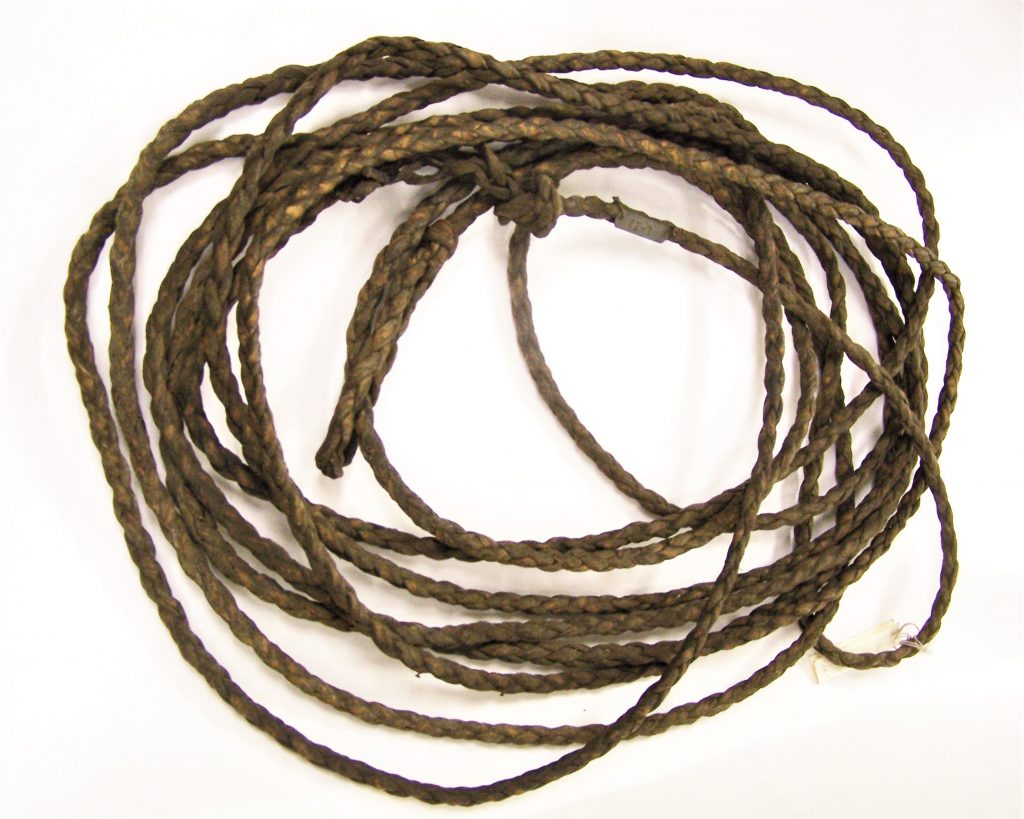
Leather Rope
Unknown, Plains
19th century
1984.E.0672
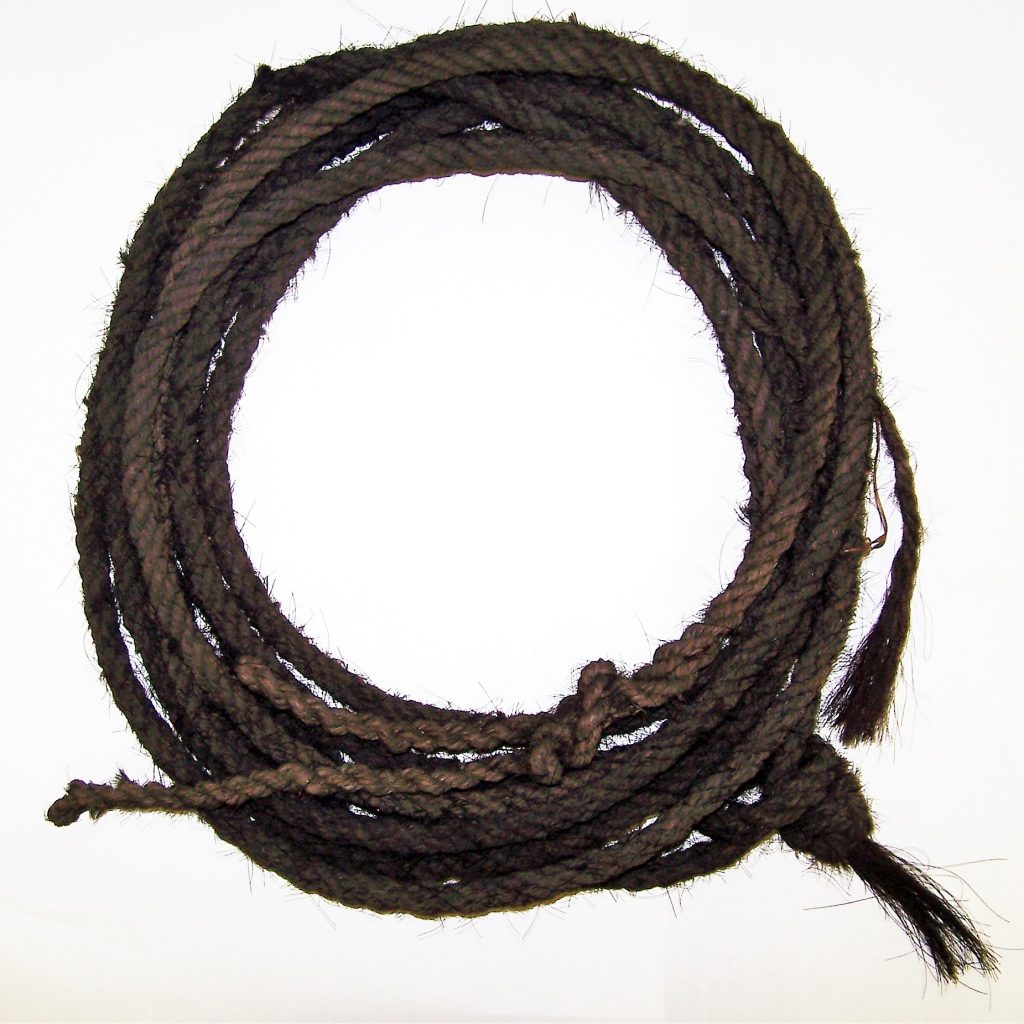
Horsehair Rope
Unknown, Northern Plains
Early 20th century
1984.E.0671
Explore the other sections of this exhibit below
